Amethyst Deceiver / Summer / Autumn / Edible
Welcome to our captivating blog post on identifying and foraging the Amethyst Deceiver (Laccaria amethystina), a delightful and eye-catching mushroom that adds a touch of vibrant color to your wild edible harvests. This small yet stunning fungus, easily recognized by its striking violet hue and delicate gills, can be found in various woodland environments and is a fantastic addition to any forager’s repertoire.
In this post, we’ll explore the intriguing world of Amethyst Deceivers, delving into their unique features, preferred habitats, and the best times to find these enchanting mushrooms. We’ll also share invaluable tips and techniques for accurate identification and sustainable foraging practices, ensuring that you can safely and responsibly enjoy the bounty of these beautiful fungi. Lastly, we’ll provide some delectable culinary suggestions to help you savor the subtle flavors and striking appearance of the Amethyst Deceiver, elevating your foraged feasts to new heights. So, join us as we embark on this exciting journey into the colorful and fascinating realm of Amethyst Deceiver mushrooms!
Scientific Name
Laccaria amethystina
Family
Hydnangiaceae
Habitat
This mushroom, common in temperate areas of Europe, Asia and the Americas’ grows in deciduous as well as coniferous forests. I find them mostly with beech or oak. It appears in late summer through to early winter.
Description
This is quite a changeable mushroom and can appear different depending on weather conditions. So care must be taken when dealing with older specimens as the colour may have faded.
Identifying Features:
Cap:
Convex to flattened, sometimes even with upturned edges. Lilac/purple when young then fading to tan/brown
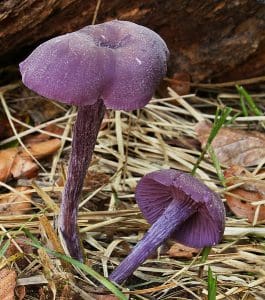
Stem:
Tough fibrous, twisted and quite often hollow, same colour as the cap.
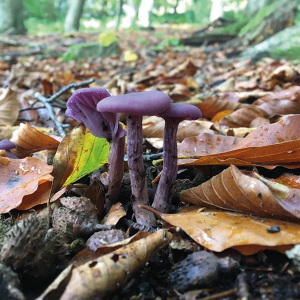
Gills:
lilac/purple when young fading to tan/brown with age. Widely Space with intermediate gills
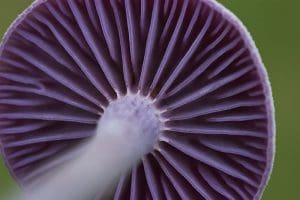
Smell:
mild mushroom scent
Spores:
White.
Differences
It can have a really wavy cap and completely faded cap – see images below
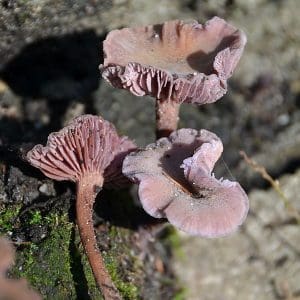
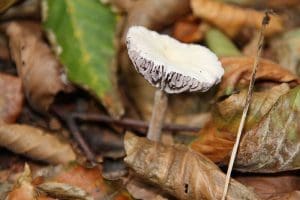
Spores
White to Pale Lilac
Uses
Can be used in a vast number of recipes, however, one of our favourites is simply fried quickly and stirred through white rice to give bright flecks of purple.
In food
It has a pleasant mushroom flavour so works well in any dish. It keeps it purple colour when cooked so livens up any dish. The stems are quite tough so I only collect the caps.
Harvesting
Quite small but can be gathered in large numbers as they often appear in groups. The stems are quite tough and I personally only use the caps.
Known hazards
While not toxic itself, in soils that are polluted with arsenic, it can accumulate a high concentration of that element.
Potential lookalikes for the Amethyst Deceiver
The potentially deadly Inocybe geophylla lilacina, the lilac fibrecap, but this mushroom has off white to grey gills whereas the amethyst deceiver has the same colour gills as the cap and stem.
References
The Amethyst Deceiver (Laccaria amethystina) is known to be a bioaccumulator of heavy metals, meaning it can uptake and store heavy metals from the environment. However, it is important to note that this characteristic is not exclusive to the Amethyst Deceiver, as many other fungi can also accumulate heavy metals.






1 reply on “Amethyst Deceiver Mushrooms (Laccaria amethystina) Identification”